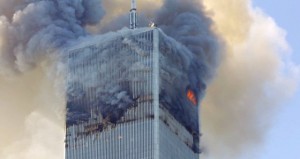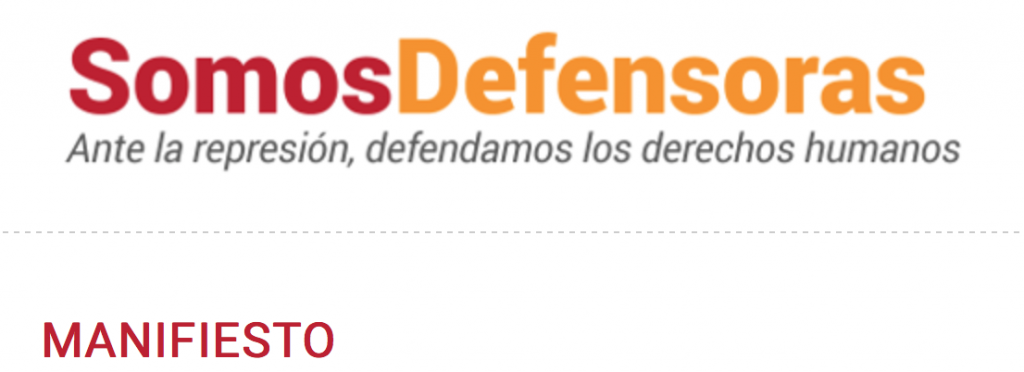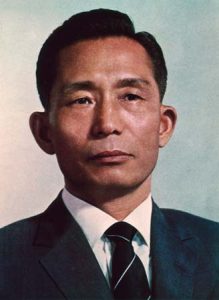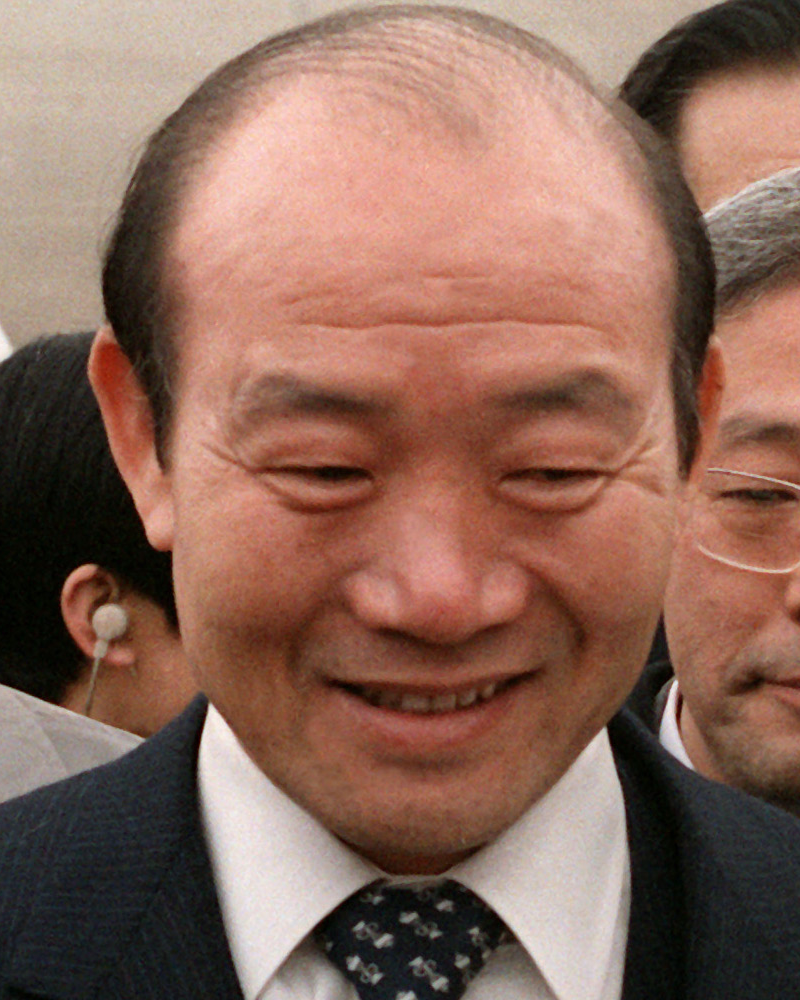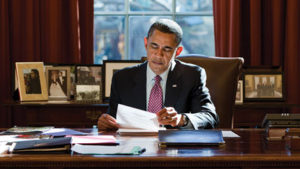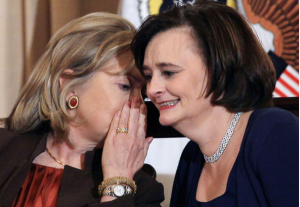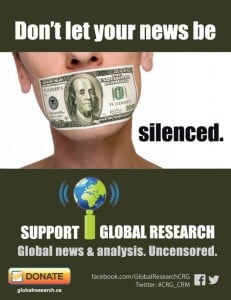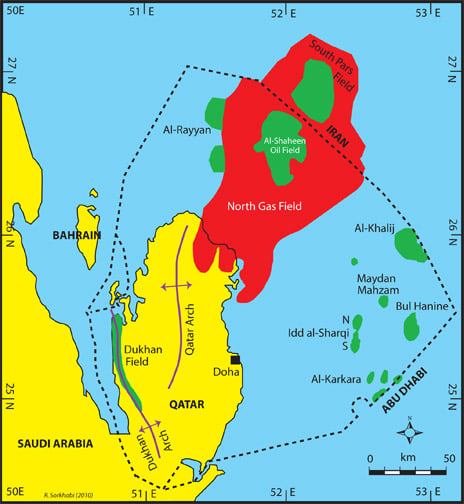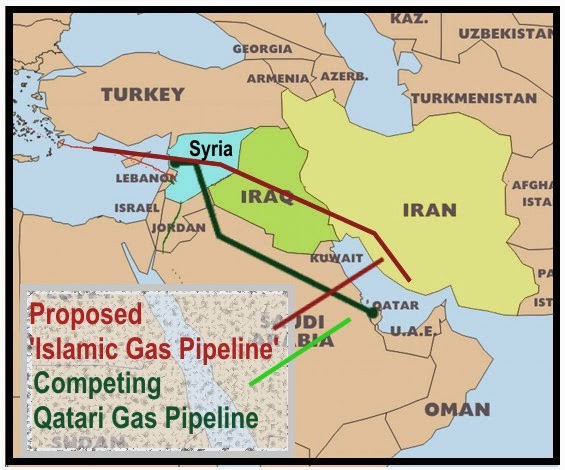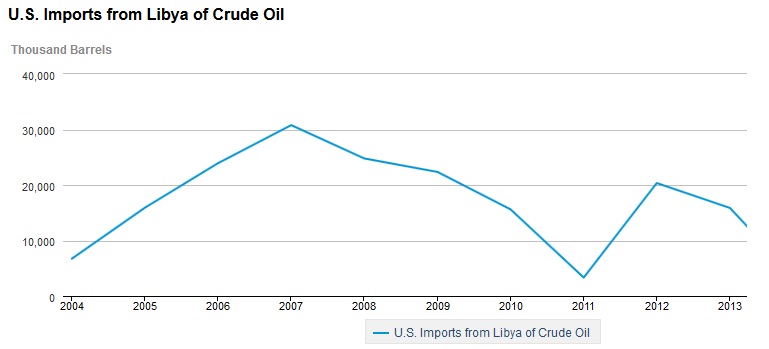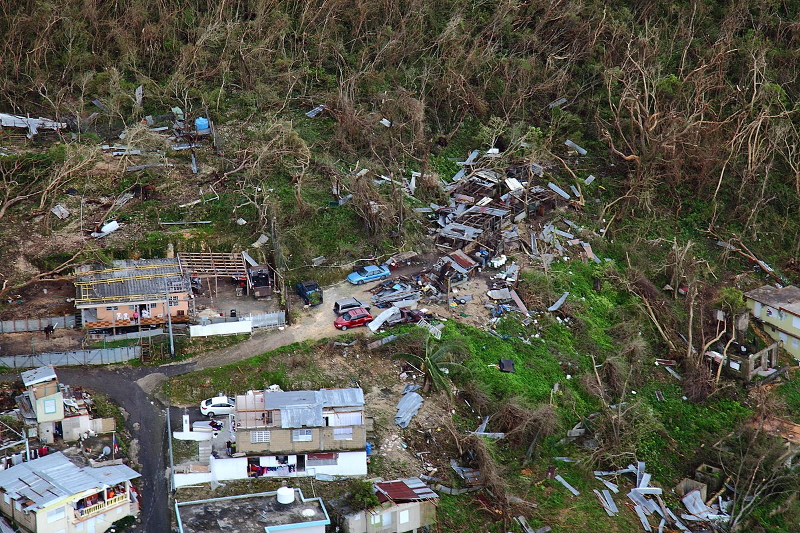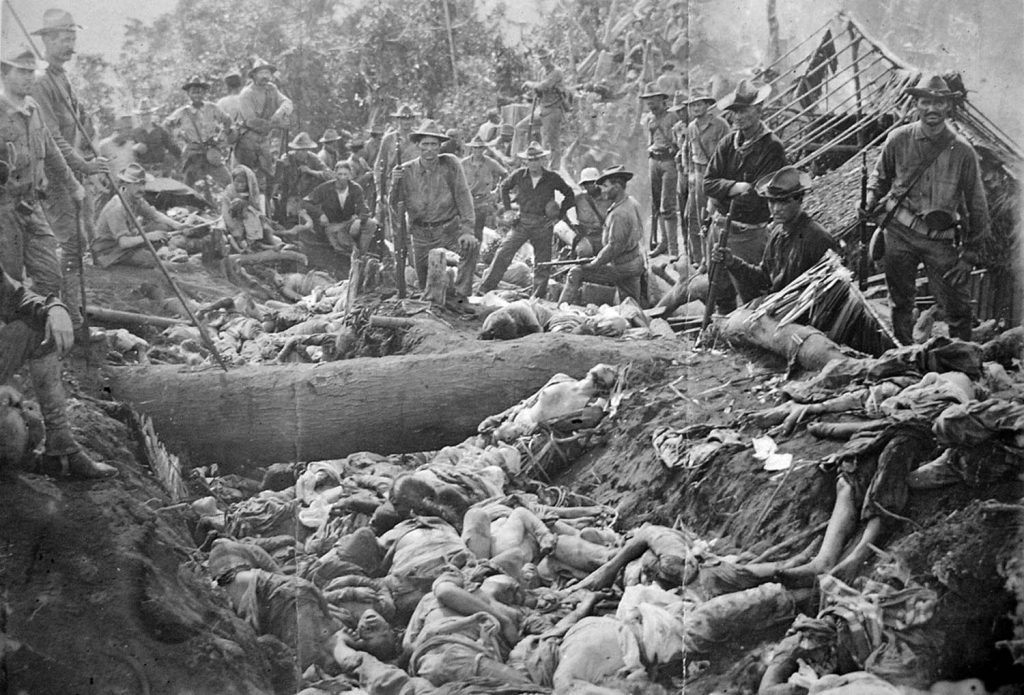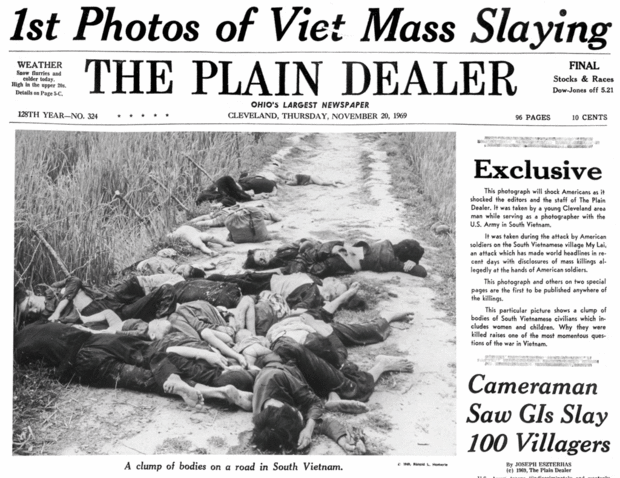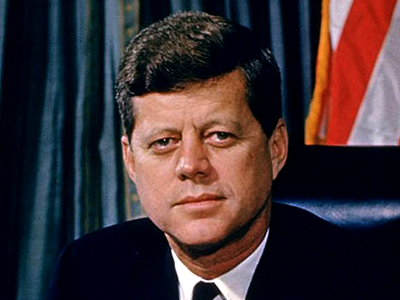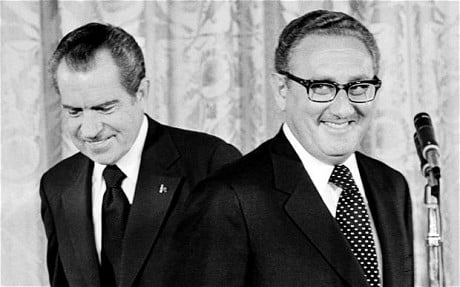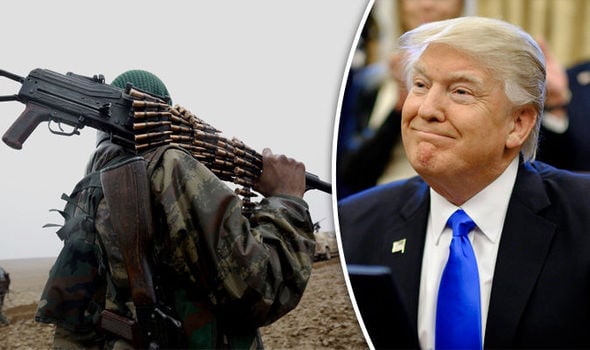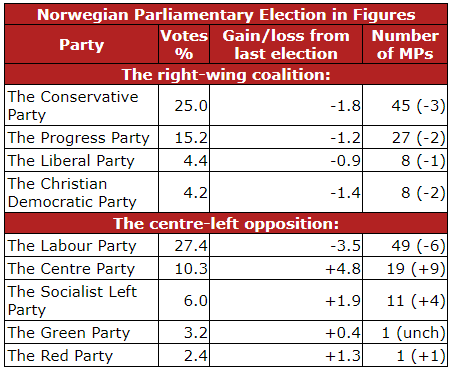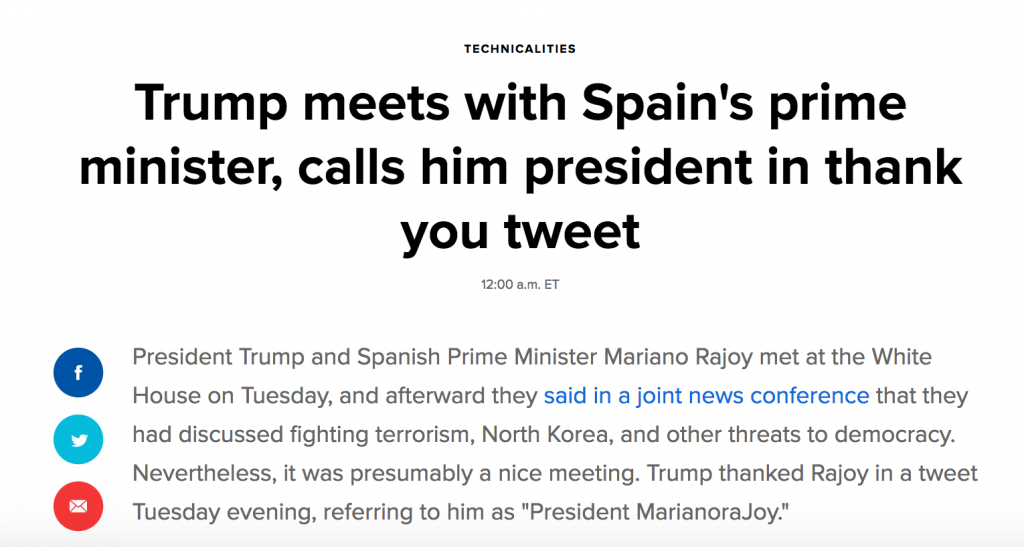The supposed South Korean success story has been achieved thanks to policies that run contrary to the economic model advanced by the World Bank. Far from being a virtuous accumulation of wealth through the advantages of free-market forces, the economic development of South Korea came about by “a brutal primitive accumulation achieved by the most coercive methods, in order to produce virtue by force” (J-P Peemans). Korea has obtained its economic results under the yoke of a very repressive regime that had the support of the United States in the framework of its containment of the so called “socialist” regimes. South Korea has adopted a production-driven economic system that has little respect for the environment. The South Korean example is not to be recommended, nor is it repeatable, but it deserves to be analysed.
The World Bank claims that South Korea is an undeniable success story.
In the World Bank’s version, the country’s authorities have used external loans efficiently, have attracted foreign investments and used them to set up a successful development model based on export substitution. The industrialisation model through export substitution represents the World Bank’s (and others’) alternative to the industrialisation model through import substitution (which implies producing the imported commodities within the country itself). Instead of producing what it imported, Korea has channelled its export activities towards meeting the demands of the world market while successfully developing industries that yield high added value. It has replaced the export of unprocessed or minimally processed commodities with the export of commodities that have required advanced technology. The World Bank claims that the State has intervened in a modest measure to support private initiatives and ensure the free play of markets forces. Yet in actual fact the Korean way to industrialisation and sustained growth largely runs counter the Bank’s official version.
I must start by saying that I cannot see Korea as a model to be imitated, and that my position rests on ethical, economic and social reasons. Korea achieved the recorded results under a harshly repressive dictatorship protected by the United States to counter so-called socialist regimes. Korea developed a productivist model that completely disregards environmental considerations. The Korean way is neither commendable nor reproducible. But it should be examined carefully.
The Korean success is due to several factors: a high degree of intervention from the State (which has steered the process with an iron hand), substantial U.S. technical and financial support (in the form of grants), a radical land reform carried out from the start, a 25-year period during which the industrialisation model based on import substitution was gradually converted into export substitution (the latter being impossible without the former), state control of the banking sector, the enforcement of authoritarian planning, strict control of currency exchange and capital flows, state-enforced prices for a wide range of products, and not least, the protection afforded by the U.S., allowing Korea to implement policies that it condemned elsewhere. The Korean government has also made great progress in education, thus ensuring a ready supply of highly skilled manpower to private enterprise.
Paradoxically the scarcity of natural resources has been an asset in the country’s development in that it has not attracted the greed of transnational corporations or the US. The U.S. saw Korea as a military strategic zone to counter the communist bloc, not as a strategic source of supplies (as is the case for Venezuela, Mexico or countries in the Persian Gulf). Had Korea been endowed with large oil fields or other raw materials, the country would have been treated as a supply zone and would not have been allowed the same margin of flexibility to develop its powerful industrial network. The U.S. is not prepared to deliberately promote the emergence of powerful competitors possessing large natural reserves as well as diversified industrial activities.
The political and geostrategic context
In an agreement signed in 1905 the United States and Japan defined their respective influence zones in East Asia. The U.S. would control the Philippines, which they had conquered in 1902. Taiwan (which was annexed as early as 1895) and Korea fell into the Japanese zone. In 1910 Japan annexed Korea and turned it into a food producing convenience, and later into a kind of all-purpose appendix to Japanese industry. When Japan’s imperialism was defeated at the end of the Second World War it left Korea with modern transport and electricity networks, a significant industrial infrastructure ranging from textiles and armaments to chemicals and mechanical construction, and a fully developed banking system. Yet Korean industry was not a consistent whole since it was created to meet Japan’s needs. Industrialisation was more advanced in the north of the country, the part that would become North Korea, while the south was more geared to farming. The middle class had hardly developed since Japan’s domination granted it very limited room. Compared with Argentina at the same period Korea was definitely backward in terms of industrial development.
As a result of the February 1945 Yalta agreement between the United States, the United Kingdom and the USSR, particularly the section about the Soviet Union’s involvement in the war against Japan, Korea was to be occupied by the Soviet army north of the 38th parallel and by the US army south of the same line |1|. The Soviet army arrived first, in August 1945, and Soviet soldiers were welcomed as liberators with the support of an anti-Japanese liberation movement that had organised into a network of people’s committees and was to be the basis of the State apparatus. The state soon set up a number of national, democratic and anti-capitalist reforms. Among the measures that met with powerful popular support was a radical land reform. The later evolution of the North Korean regime and its bureaucratic and authoritarian degenerescence should not blind us to its early economic success.
In the south things turned out differently. U.S. soldiers arrived only on 8 September 1945, six days after Japan had capitulated and two days after a national assembly of anti-Japanese people’s committees had officially proclaimed the People’s Republic of Korea in Seoul. This new authority had not waited for the U.S. army’s arrival before they disarmed the Japanese troops, liberated political prisoners, and arrested collaborators. Yet when the nationalists tried to meet the U.S. staff to propose a form of collaboration, their demand was rejected. On 9 September the U.S. Military Government in Korea (USAMGIK) was set up. It would be the main authority in this part of the country until 1948. In February 1946 the U.S. headquarters set up a Korean civilian government under the supervision of the USAMGIK. This civilian government was presided by Syngman Rhee, a rightwing politician who had returned to Korea in October 1945 after spending 39 out of the 41 previous years in the U.S. Washington wanted the Korean Democratic Party (KDP) in power, namely an anti-communist party that had been legally constituted under Japanese occupation in order to represent the interests of the Korean upper class. The KDP soon underwent a hasty face-lift under the new name of Liberal Party. Next to Syngman Rhee we thus find former collaborators of the Japanese occupying forces, and the new state apparatus retains a number of former colonial officers, particularly among repressive forces. A Korean CIA was set up and significantly called KCIA (Korean Central Intelligence Agency). It is still remembered with collective shudders.
The government that the U.S. had set up was most unpopular. In 1946 and 1948 protest took the form of popular uprisings that were harshly repressed. The General Council of Korean Trade Unions (GCKTU), led by activists from the Communist Party, included hundreds of thousands of members and led the protest marches. It was the prime target of repressive actions and was eventually suppressed in 1948. Repression was still powerful after 1948, the NU commission on Korea indicated in August 1949 that within the eight months before 30 April 1949, some 89,710 people had been detained. Thousands, if not tens of thousands of people were killed. Several historical leaders of the struggle against Japan, though not related to the communists, were assassinated by the Syngman Rhee regime.
When the country’s division was made official in 1948 with the creation of the Republic of Korea south of the 38th parallel, a large majority of the country’s political forces was against it. When the Korean war started in June 1950, the rapid advance of North Korean troops in the south is only very partly related to military reasons. It was also a logical consequence of the lack of popular support for the Syngman Rhee governement. According to the U.S. Army’s official history of the Korean war the South Korean army ‘disintegrated’ |2|. There were mass desertions.
The war lasted for three years and brought the world to the brink of a third world war. The U.S. army was massively involved with the support of its Western allies, 300,000 Western soldiers fought on the side of the South Korean army with a UN mandate |3|. They fought against the North Korean army and a strong Chinese support (estimates vary between 500,000 and 850,000 men). The war resulted in three million dead among the Korean population. During the war the Syngman Rhee government exerted a fierce repression against the South Korean left wing. Some sources mention (some) 100,000 executions or assassinations among activists who were against the government |4|. The armistice on 27 July 1953 brought the two armies virtually to their starting point, on either side of the 38th parallel.
Korean bourgeoisie becomes a state ward
Left as it was with an obsolete industry and a financial system formerly controlled by the Japanese |5|, the Syngman Rhee government would use it, with the blessing of the USAMGIK, to reward and comfort the upper class’s loyalty, since after all they were the basis of its political power. The new industrialists made thriving business, not thanks to their own investments, for they hardly had any equity, but thanks to tax incomes and U.S. subsidies that the dictatorship generously handed out. Moreover a strictly protectionist policy protected them from foreign competition. Later the Park Chung Hee dictatorship (1961-1979) would create industrial and financial conglomerates called chaebols.
Finding 1: The Korean bourgeoisie developed in the shadow of the State, which was its guardian and protector.
US external financial aid
The World Bank passes over the fact that Korea did not rely on loans for 17 years after the end of WWII, and that later it only contracted limited loans until 1967. From 1945 to 1961 it neither borrowed money nor received any foreign investments. According to the criteria of the World Bank and neoclassical economics, such a situation is a complete anomaly.
On the other hand, it received over USD 3,100 million as grants from the United States over the same period |6|. No other external aid was received. But the amount is more than significant. It represents twice what the Benelux countries received from the Marshall Plan, one third more than France received, 10% more than Britain. The grants Korea received from 1945 to 1961 amount to more than the World Bank’s total loans to newly independent developing countries (colonies not included).
From 1962 onward, Korea would borrow, though only moderately. From 1962 to 1966, U.S. grants still amounted to 70% of inflowing capital, while loans accounted for 28% and foreign investments for 2%. Only from 1967 did capital inflow mainly consist of loans from foreign (mainly Japanese) banks. And foreign investments only became significant in the late 1980s once Korea had successfully carried out its industrialisation.
Finding 2: Korea’s initial industrialisation was in no way dependent on external loans or foreign investments.
Land reform and the State’s coercion of peasants
At the end of the second world war southern Korea was still an essentially agrarian country. Until the early 1950s over 75% of its population lived in the countryside.
U.S. military authorities then proceeded to implement a drastic land reform to counter the communist influence |7|. The large estates that had been taken from the Japanese |8| without any compensation money and from Korean land owners with compensation money were broken up and most peasants became owners of small pieces of land |9| (estates could not exceed 8 acres for one family |10|). The State’s intervention was active and coercive. The rent that peasants used to pay to their landlords was replaced by taxes to be paid to the State. The State took over the farming surplus that formerly went to estate owners. The State made it compulsory for farmers to reach given production quotas for certain products. This quota was to be delivered to State entities at a price determined by the authorities. The set price was very low, often less than production cost |11|. It has been estimated that “until 1961, the price at which rice was bought did not cover farmers’ production costs and remained well below market price until 1970. Until 1975, public trading offices controlled at least 50% of the amount of rice and 90% of the amount of barley placed on the market” |12|.
To sum up, Korean farmers were freed from the grip of estate owners and could farm their own land, but they had to work for the State.
Finding 3: When it imposed a radical land reform largely based on the expropriation without any compensation of Japanese estates the State interfered in a despotic way. The land reform was meant to undermine any communist appeal. Peasants were subjected to a strong constraint from the State.
Farming surpluses used to serve cities and industrialisation
Since it set the prices at which products were bought (from farmers) and sold (to consumers), the State was supplying food (and essentially rice) at subsidised (and therefore low) prices to those social sectors that were regarded as strategic, such as the vast State bureaucracy.
Moreover, if a bowl of rice could be afforded by the urban population, and particularly by the industrial proletariat, wages could be kept at a very low level.
In addition, taxes paid by farmers were used by the State to invest in infrastructures for communications, electricity and industry.
As J-P Peemans observed, writing about the demands made on farmers,
“It was in no way a virtuous accumulation resting on the virtues of the market, but a brutal form of primitive accumulation resting on the most coercive methods to create ‘‘virtue’’by force” |13|.
Military aid which amounted to more than USD 1,500 million, should also be taken into account |14|. A large part of it went into the building of roads, bridges and other infrastructures that were used for industrial production. Finally we have to add what the US expeditionary corps in Vietnam ordered – in the early 1970s they amounted to 20 % of South Korean exports.
Finding 6: South Korea benefited from massive US external aid. Only very few other countries have received the same kind of preferential treatment: Taiwan and Israel are two of them.
Industrialisation by import substitution
The industrial development in the 1950s was mainly organised around the production of goods that would replace imports so as to meet the needs of the domestic market, particularly in the areas of the food and textile industries. These amount to 55% of the industrial production in 1955. Production focused on the processing of cotton, sugar, and rice flour. The manufacturing industry only accounted for 10% of the GDP in 1955.
Finding 7: In the 1950s Korea developed an industrialisation policy that aimed at replacing imports; this was to be reinforced in the 1960s.
Economic policy under Park Chung Hee’s military dictatorship (1961-1979 |15|)
Syngman Rhee’s corrupt dictatorship was overthrown by the urban uprising students initiated in April 1960. A powerful movement of political centralisation quickly developed among urban masses that mobilised under the banner « a peaceful unification for the whole of Korea » put forward by the students’ movement since the late 1960s.
Mobilisations were stopped by General Park Chung Hee’s coup which set up a military dictatorship, further reinforcing the State’s intervention in the economy. The new government nationalised the whole financial system, from the largest bank to the smallest insurance company, to turn it into its instrument in the economy.
From 1962, the structure of external financing would gradually change but grants were still the main supply source until 1966. The United States urged Korea to resume economic relations with Japan. Japan signed a ten-year agreement (1965-1975) that included economic aid to the amount of USD 500 million, 300 of which was in the form of grants.
Korea contracted its first loan with the World Bank in 1962 and signed its first agreement with the IMF in 1965 (under US pressure). The Korean dictatorship’s willingness to cooperate with the World Bank was determined by a political rather than an economic agenda.
A posteriori Mahn-Je Kim, who had been Deputy PM, Finance minister and minister for economic planning under dictator Chun Doo Hwan in the 1980s |16| and who then became CEO of a steel company (POSCO), declared his satisfaction at the government’s excellent relations with the World Bank and gave a favourable assessment of the dictatorship. He wrote that the Bank helped dictator Park to gather support on the domestic as well as on the international level:
“Such recognition from the Bank – the world’s most authoritative international development organization – positively influenced Korea’s international relations, but was even more important domestically. It provided a powerful and persuasive justification to the Korean public for the existence of a dictatorial government devoted to economic development” |17|.
The World Bank’s complicity with the dictatorship cannot be more bluntly stated.
General Park Chung Hee tried to win greater autonomy from Washington in his economic policies. Calling on World Bank’s loans from 1962 onward, then mainly on loans by private foreign banks since 1967 was part of this determination to gradually diminish Korea’s dependence on financing by the U.S. government. This also suited Washington since the US administration had started to take measures to limit the outflow of U.S. dollars in 1963.
Finding 8: The WB supported Park Chung Hee’s dictatorship. The dictator used this support to consolidate his position both in the country and on the international scene.
General Park Chung Hee implemented an accelerated industrialisation policy underpinned by the strictest planning. The first five-year plan was launched in 1962. Korea took a firm protectionist stand with regard to its agricultural production (a ban on rice imports) and industrial output. In the mid-60s, Korea already had a number of light industries supplying the domestic market and winning market share abroad. These industries were basically making products – using a massive cheap labour force – by processing or assembling goods imported from abroad. The dictatorship sought to radically change this situation by consolidating the country’s industrialisation. It decided to reinforce the industrialisation model based on import substitution. Korea would attempt to produce the products it had until now imported. To achieve this objective, starting from the end of the 1960s Korea concentrated on developing a heavy steel and capital goods industry (machine tools, assembly lines, turbines, etc.) as well as a petrochemical industry. Park’s government further wanted to produce for export.
The State favoured the development of chaebols, vast conglomerates bringing together a number of private companies selected by Park to spearhead the new industry.

These chaebols are now known the world over: Samsung, Hyundai, Lucky Goldstar, Daewoo |18|, Kia, etc. Year after year they have benefited from substantial and virtually free financial help from the State. The government’s or the banks’ borrowings (at market price) mainly from US banks before Japan took pride of place in the 1970s provided the chaebolswith a virtually inexhaustible source of fresh capital at very low interest rates, when not at a loss for the loaning party. Direct subsidies from the State were added to this. In actual fact it took over the management of the country’s economy through a Board for economic planning. And steered all development choices within the chaebols with a steely determination.
Five-year plans followed each other. During the first five-year plan (1962-1966) priority was given to the development of energy, fertilisers, and cement. The second one (1967-1971) highlighted synthetic fibres, petrochemical industry, and electric appliances. The third one (1972-1976) focused on the steel industry, transport facilities, household appliances, and ship building.
Finding 9: The State planned the country’s economic development with an iron hand. In a sense, it was the State that created the Korean capitalist class.
The World Bank’s reluctant support
At first the World Bank considered Korea’s intention to develop a heavy industry as premature |19| and tried to dissuade the authorities. But faced with Seoul’s insistence and anxious to safeguard its influence in the country, the World Bank changed tack and supported the import substitution industrialisation policy. It should be mentioned that this was when McNamara became World Bank President (1968) and that his chief economist Hollis Chenery was not opposed to developing countries using the import substitution model.
The Korean argument went as follows:
1) we need to have a heavy industry (steel, petrochemicals) and to manufacture capital goods so that we can supply our light industries ourselves, reduce imports and improve our balance of payments;
2) on the world market, competitor nations can quickly win market share from us by producing the same goods at a lower cost by using lower-paid labour than ours. We must therefore acquire a heavy industry in order to diversify our exports towards higher added value products that contain more components produced by ourselves. The other nations will have a hard time competing with us in this area;
3) in addition to the development of heavy industry, we are going to step up the pace in technology and make increasing investments in higher education and research;
4) at the start, our heavy industry will not be competitive compared to foreign competitors who can access our domestic market, so we must protect our young industries and close our borders to foreign competition;
5) the State must use public money to finance and control all this.
In the mid 1970s, when Korea was on the way to developing a powerful heavy industry sector, the World Bank once again voiced its doubts about the chosen strategy. It felt that Korea was over-ambitious and suggested that the country scale down its efforts in this sector |20|. The Korean authorities chose not to follow these recommendations.
The most dramatic illustration of this policy was the programme for the development of heavy industries in 1977-1979. For two years 80 % of all state investments were devoted to this end. Its financing was supported by a huge increase of the economy’s indebtedness, the State’s as well as the banks’ and private companies’, but also by the immobilisation of all pension funds and the enforced use of private savings |21|.
Mahn-Je Kim describes in diplomatic terms, and with a hint of irony, the attitude of the World Bank economists:
“The flexibility of the World Bank economists should be emphasized. They were typical neoclassical markets economists, and they contributed greatly to the indoctrination of Korean officials with the ideals of the market economic system. The Bank’s economists in general were not dogmatic and knew how to harmonize textbook principles with real-world constraints” |22|.
Mahn-Je Kim is referring to the period leading up to the early 1980s.
Finding 10: South Korea did not adhere to the World Bank’s recommendations.
Social changes between 1960 and 1980
During Park Chung Hee’s dictatorship the structure of South Korean society was deeply modified. The urban population rose from 28% in 1960 to 55% in 1980. In the capital, Seoul, the population doubled between 1964 and 1970, from 3 to 6 million inhabitants. In 1980 it was close to 9 million. The structure of the active population radically changed too. In 1960 63% worked on the land, 11% in industry and mining, and 26% in services. Twenty years later proportions had changed as follows: 34% in agriculture, 23% in industry and mining, and 43% in services. In 1963 there were 600,000 industrial workers, in 1973 1.4 million and in 1980 over 3 million, half of whom were trained workers. They are subjected to extreme exploitation: in 1980 the wage costs of a Korean worker amounted to one tenth of the wage cost of a German worker, 50% of a Mexican worker, and 60% of a Brazilian worker. One of the components in the Korean miracle was the exploitation of industrial manpower. A Korean worker’s working week in 1980 was the longest in the world. There were no legal minimum wages. After the General Council of Korean Trade Unions was crushed between 1946 and 1948, workers had no right to a genuine trade union any more. In 1946 the Syngman Rhee government created the Federation of Korean Trade Unions with the support of the U.S. and of the US TU Council AFL-CIO. The FKTU was the only legal trade union confederation in South Korea until the 1990s. It was a mere relay for the dictatorship and the bosses. The working class was shackled, at least until the 1980s.
Next to plant workers other social categories became significant. In 1980 there were 100,000 engineers and 130,000 technicians. The number of students in higher education also rose dramatically to reach about one million students in 1980.
Finding 11: Between 1960 and 1980 the social structure was deeply modified and came closer to that found in industrialised countries.
Finding 12: The dictatorship prevented the working class from developing independent trade unions and used harsh repressive measures. One of the components in the Korean miracle was the exploitation of workers.
From Park Chung Hee’s to Chun Doo Hwan’s dictatorship
Throughout Park’s dictatorship, in spite of repressive measures, large protest movements developed at regular intervals, often ignited by students. We can mention the 1965 protest marches against the signing of the treaty between Japan and Korea, and those in 1972 against martial law and a new Constitution that made it possible for the dictator to stay in power till he died.

In October 1979 fiercely repressed student demonstrations in the city of Pusan led to a government crisis that resulted in the assassination of Park Chung Hee on 26 October. Park was shot by his closest collaborator Kim Jae Kyu, who was then at the head of the KCIA. On 16 October a large student march in Pusan had led to violent confrontations with the police. Park’s government immediately proclaimed a state of emergency in that city and sent an infantry division. However demonstrations spread to other towns such as Masan, another industrial city with several export companies. Many workers were involved in street protest. Park proceeded to proclaim a state of emergency in Masan. 4,207 people were arrested over the four days of confrontation. Student demonstrations reached the capital city Seoul |23|. The KCIA’s chief considered that if he got rid of Park, the situation could be saved.
On the day after the death of General Park the army was divided: part of it evoked the possibility of liberalising the regime. Demonstrations were still organised. In early December 1979 most political prisoners (some of whom had to serve long prison sentences) were released. On 12 December Major-General Chun Doo Hwan took everybody by surprise and successfully carried out a coup within the army. He had his main opponent General Ching arrested and took complete control of the armed forces. The demonstrations continued. On 14 April 1980 Chun Doo Hwan was appointed at the head of the KCIA while retaining his functions within the army. Demonstrations proceeded apace.
Undisguised military dictatorship was back on 18 May 1980. Fierce repression resulted in all opposition leaders being arrested, which led to violent urban uprisings culminating in the Kwangju insurrection.
Immediately after martial law had been proclaimed anew on 18 May 1980 several thousands of students from the Chonam University in Kwangju took to the streets. Paratroopers were sent out and killed demonstrators (including young girls) with their bayonets. On the following day over 50,000 people were out to face the army. In the ensuing confrontations over 260 of them were killed. After four days of street fighting some 200,000 inhabitants out of 750,000 were out and determined to be heard. They eventually took control of the city. Radio stations were set on fire by demonstrators who were incensed by the fact that censorship involved in the martial law had silenced all information on their fight. The insurgents took over weapons that the soldiers who had retreated outside had left behind, and organised committees to manage the town administration. On 23 May the province of Cholla in the south of the country was entirely controlled by students and the insurgent population. Kwangju students took over buses and lorries, and fully armed as they now were, traveled from town to town and thus extended the movement through the country. When new paratroopers marched on Kwangju, the insurgents formed a crisis committee in order to negotiate with the authorities in charge of the martial law. They demanded that the authorities apologise to the people of Kwangju for the atrocities they had been responsible for, that they pay compensation money for the wounded and the dead, that they promise not to retaliate, that military leaders would not move their troops before an agreement was reached. Yet in spite of those negotiations about 17,000 soldiers marched on the town in the early hours of 27 May and set up military occupation. Several hundred students and inhabitants were killed |24|. Repression was carried out with the blessing of Washington and of the U.S. army |25|. In the following months repression struck all over the country. According to an official report dated 9 February 1981 over 57,000 people were arrested during the ’Social Purification Campaign’ that had been launched in the summer 1980. Some 39,000 of them were sent to military camps for ‘physical and psychological reeducation’ |26|. In February 1981 dictator Chun Doo Hwan was received at the White House by the new U.S. president Ronald Reagan |27|.
Washington a party to the May 1980 massacres
The armed forces of the Korean Republic were placed under joint U.S.-Korean command, itself under the control of the commander-in-chief of the U.S. forces in South Korea. The only exceptions were a garrison in the capital and a section of paratroopers under direct presidential authority. The greater part of the Korean Republic’s armed forces could not be mobilised without the permission of the U.S. forces’ commander-in-chief. At the time of the Kwangju uprising in May 1980, the troops from the garrison in the capital had been mobilised to keep order in Seoul and paratroop units sent to Kwangju. If there had been further uprisings – on a similar or greater scale than the Kwangju uprising – the government could not have responded since it had no more reserve forces under its direct command.
It was for this reason that the United States, following a request from the South Korean government, quickly made available some of the troops under the joint command. On May 19, the 31st division was dispatched to Kwangju. And for the final thrust, four regiments – totaling 7,800 men – were detached from the joint command and sent to Kwangju. In addition, the American aircraft carrier Coral Sea, at the time heading for the Middle East, was ordered to change course and make full speed for the Korean peninsula.
When the students of Kwangju sent a desperate message to Democrat president Jimmy Carter |28| asking him to intervene on behalf of their rights, the United States ignored the appeal on the pretext that “it had not come through the official channels”. What, we may ask, are the “official channels” in the case of a city under siege? The Washington Post of June 1, 1980 reported the words of a prominent American official:
“It is not a matter of human rights. It is a matter concerning the national interest of the United States in creating and maintaining stability in north-east Asia.”
It should be noted that the Japanese government also sided with Chun Doo Hwan against the Korean people.
Finding 13: A powerful social movement spearheaded by the students challenged the dictatorship. After the assassination of Park in October 1979 and a brief democratic interlude, a brutal new dictatorship was established thanks to the bloody repression of May 1980 supported by Washington and Tokyo.
The economic policy of dictator Chun Doo Hwan(1980-1988)
After the assassination of dictator Park Chung Hee in 1979 and his replacement by General Chun Doo Hwan, the country’s economic orientation remained basically unchanged. Korea, which during the 1970s was heavily in debt to foreign banks, mainly Japanese, was harder hit than the other developing countries by the brutal hike in interest rates because it had mainly borrowed at variable rates. In 1983, South Korea was fourth on the list of most heavily indebted countries in absolute figures (43 billion dollars), behind Brazil (98 billion), Mexico (93 billion) and Argentina (45 billion). But once again, its geostrategic position meant that it received a different treatment from that of the other developing countries. Japan came to the rescue by paying Korea 3 billion dollars (by way of war reparations), which Korea used to keep up debt repayment to Japanese bankers. In this way Korea avoided having to appeal to the IMF and comply with its strict conditions |29|. In exchange, the Japanese government was able to avoid bankruptcy for some of its banks and obtain more flexible investment facilities from South Korea.
Finding 14: Contrary to the World Bank’s version of the story, the massive external debt incurred with private banks came close to costing South Korea very dear. If it had not occupied a key geostrategic position in the eyes of the U.S. and Japan, it might have suffered the fate of countries like Argentina, Brazil and Mexico, all of which had been forced to submit to IMF conditions. As we shall see later, Korea was able to pursue a partially independent course of development until the 1980s.
Korea was also affected by the second oil crisis in 1979 (soaring oil prices caused by the Iranian revolution and the overthrow of the Shah), but managed to absorb its impact. Authoritarian control of the economy was maintained, with the government ordering the various industries to produce certain specific products in preference to others. It decided to reorganise the transport vehicle industry and put two chaebols in charge of manufacturing automobiles.
The World Bank objected to this development and recommended that Korea discontinue the production of finished vehicles and focus on the production of spare parts for export. It explained than Korean-made cars would not find buyers.
The Korean authorities stood their ground. And in the mid 80s, the Korean company Hyundai (wholly controlled by private Korean capital backed by the public authorities) succeeded in exporting its cars to the U.S. and winning substantial market share.
At this period, the World Bank had stopped making concessions for the industrialisation model via import substitution. In 1981, under the Reagan administration, the last economists in favour of State intervention had been replaced by hardcore neo-liberals headed by chief economist Anne Krueger. A few years previously, she had written a book on Korea to demonstrate the superiority of export substitution over import substitution |30|. Seoul’s determination to produce cars for export was an aggressive example of export substitution, and in theory it should have received the World Bank’s full support. However, this was not to be, because Seoul’s decision was seen as a threat to the U.S. automobile industry. The flexibility of World Bank economists is quickly stretched to the limits when U.S. interests are at stake.
Finding 15: The Chun Doo Hwan regime once again refused to follow the recommendations of the World Bank and its decision paid off. The Bank nevertheless continued to support the dictatorship because its ultimate aim was to maintain influence over it. At the same time, the United States began to view the appetite of South Korean companies with distrust.
The last years of the Chun Doo Hwan regime (1980-1987)
During 1979-1980, workers in many companies were seeking to form their own trade unions. The idea was to create new “independent” unions that would openly challenge the collaboration policy of FKTU management while being legally obliged to comply with it. Following the crackdown by Chun Doo Hwan, a hundred or so local sections of the FKTU were disbanded, 191 officials were dismissed and some of them were sent to camps.
The driving force behind the move to create independent unions were the young people, workers and student protesters who had chosen to take to the factories to pursue the political struggle begun in the universities.
The student movement gathered strength in 1983-1984 and went through a process of radicalisation and intense politicisation. From January to May 1986, 166,000 students took part in demonstrations |31|. The scale of the movement in the universities |32| is reflected in the number of students among political prisoners: 800 students out of 1,300 political prisoners.
The factory workers resumed the struggle in 1985. For the first time ever, a major strike broke out in a chaebol – in this case Daewoo Motors. It had a successful outcome and a new, independent trade union was created.
On 12 February 1986, the NKDP (New Korean Democratic Party) launched a petition to change the Constitution (the objective being to introduce presidential election by direct suffrage instead of by an electoral college). In the months following, a series of rallies took place, attended by tens of thousands of people in major cities around the country. Students participated independently in the democratic movement with radical slogans such as “Down with the military dictatorship”, “No to the presence of 40,000 U.S. soldiers in the country” and “Yes to a popular Constitution”.
On 29 November 1986, the regime deployed 50,000 policemen in Seoul to prevent an NKDP rally. The government hoped to forcibly quell the opposition but this policy misfired as a tide of democratic fervour swept through every level of society. Endless negotiations ensued between the regime and the opposition on electoral procedures. The government’s position was weakened by the political fallout following the murder of a student in a police station. It was in this context that a demonstration was organised by all the opposition forces, including the new coalition resulting from a split in the NKDP. The day before the demonstration, due to take place on 10 June 1987, the police arrested 3,000 people, placed 140 opposition leaders under house arrest and sent in an advance guard of thousands of policemen. These precautions were to no avail, and on 10 June and in the days after, the protest spread throughout the country, with clashes of such violence that the regime had to back off. It was a victory for direct presidential elections |33|. Washington finally coerced the regime to loosen its grip.
In the factories, the movement went far beyond electoral concerns. The South Korean labour force was quick to move into the breach created by the mass demonstrations of June 1987, which had been largely spearheaded by students.
In the summer of 1987 South Korea dictatorship was weakened by an unprecedented number of strikes. Between 17 July and 25 August, 1,064 labour disputes |34| were recorded whereas the annual average over the previous ten years was a mere 200 |35|. All sectors of the economy were affected, including the chaebols (24,000 workers in the Hyundai naval shipyards, 15,000 coalminers, etc.). The strikers used forceful measures: occupation of company premises, including directors’ offices, blocking of railway lines and occupation of railway stations, rejection of lock-out tactics. These disputes resulted in substantial pay increases and the recognition of independent, democratic trade unions.
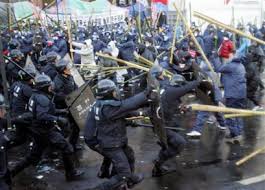
In 1988 there were already 2,799 democratic unions. In 1989, the number rose to over 7,000. January 1988 saw the creation of the Korean Trade Union Congress, which a few years later would become the Korean Confederation of Trade Unions (KCTU). Yet up until 2000 the creation of a trade union confederation was an unlawful act.
On the political scene, elections by universal suffrage were organised in 1988 – a first for Korea. But the opposition was divided and three candidates were put forward, the “three Kims”: Kim Youngsam, Kim Daejung and Kim Jongpil. General Roh Taewoo, the candidate supported by the incumbent and who was by his side at the putsch of 1979 and the Kwangju massacre of May 1980, was elected.
Finding 16: Assailed on all sides by protest movements, and faced with the growing strength of a young, combative workforce, the dictatorship loosened its grip and organised the first free elections. Washington had finally brought pressure to bear. Thanks to a divided opposition, the regime’s candidate managed to win the elections, but movements within the factories were intensifying.
The decisive 1990s
From the 1980s to the mid-1990s, Korea went from strength to strength in terms of its position in world industry: from the manufacture of bulldozers and IT equipment to shipbuilding (in the 1980s it ranked no. 2 shipbuilder worldwide after Japan). Korea was shaping up to be a serious competitor for U.S. and European transnationals in several fields.
During the same period, China drew closer to Washington, having for some time curtailed its support for movements in various countries that threatened the stability of U.S. allies. China joined the World Bank in 1980. Meanwhile in Russia, Gorbachev signed geostrategic agreements with Washington in the late 1980s, the Berlin wall came down in 1989 and the USSR imploded in 1991. The cold war was at an end.
The international politico-military situation left over from World War II, the victory of the Chinese revolution of 1949 and the Korean War of 1950-1953 had fundamentally changed. Washington considered it would be better in future to avoid supporting declared dictatorships battling with powerful opposition movements and social unrest. In the face of opposition forces prepared to fight to the end, it would be wise to ease the pressure (as in June 1987) and safeguard what was essential – in other words maintain favourable relations with the regime that was replacing the dictatorship. In addition, it was thought that a democratic government could more efficiently apply a neo-liberal agenda, since it reduced the possibility of conflict with a democratic opposition and a social movement opposed to neo-liberalism.
In 1992, following the merger of the party in power and two opposition parties, Kim Youngsam, a former moderate opposition leader, was elected with the backing of Roh Taewoo. Kim Youngsam was the first civilian president for 32 years, but nevertheless depended on the support of the military and sided openly with Washington |36|. His agenda was clearly a neo-liberal one.
Korea continued to occupy a strategic military position, but the United States government, which had 37,000 soldiers posted in the country, decided it was time to curb Korea’s economic appetite. Washington applied pressure, using various measures such as tariff protection against Korean products. Washington requested that Korea comply with the recommendations of the World Bank and the IMF, and was partially successful, as can be seen from the report of the mission sent to Korea by the IMF in November 1996 and from the minutes published after a debate between IMF directors. Here are some extracts:
1) On the removal of trade barriers or other forms of import restrictions: “Since 1994, the authorities have gradually removed obstacles to importation and reduced customs duties in accordance with the Uruguay Round |37| agreement. Granting of import licences is now automatic except for a small number of products that are a health or security risk” |38|.
2) On privatisation: “Over the last ten years, the authorities have partially applied two privatisation programmes. The programme implemented in December 1993 was designed to see the privatisation, between 1994 and 1998, of 58 of the 133 State-owned companies. At mid-1996, 16 companies had been privatised” |39|.
3) On the liberalisation of capital movements: “The administrators of the IMF are also pleased to see the recent liberalisation of capital movements. Although some administrators have advocated a gradual process in this matter, others consider that rapid, full liberalisation in this area offers numerous advantages at Korea’s present stage of economic development.”
Finding 17: From 1985 on, Washington gradually modified its policy relative to dictator allies in a new climate reflecting the end of the cold war. This turning point was seen in its relations with Brazil in the second half of the 1980s, the Philippines in 1986, South Korea in 1987, and in the next decade with South Africa in 1994, progressively with Chile and with Indonesia in 1998. From the U.S. viewpoint, the bottom line was positive: essential interests had been safeguarded. What, one wonders, would have happened if Washington had persisted in supporting its dictator allies in the face of mass opposition and protest? The turning point was not a global one, however. Washington continued to support dictatorships in Arab countries, starting with Saudi Arabia.
The Asian crisis of 1997 and its consequences
Between 1990 and 1996, South Korean workers obtained a 67% increase in real wages |40| – an impressive achievement. The neo-liberal agenda met with resistance from workers in Korea as elsewhere. On 26 December 1996, the first general strike since 1948 was declared. The workers came out in protest against a reform in the labour code that would make layoffs easier. After 24 days on strike, they got their way: the labour code reform was deferred. The KCTU emerged stronger from this strike.
However, the major advances won by the workers faced a new challenge with the Asian crisis of 1997, and the employer class was quick to take its revenge.
In addition, what the United States and the other industrial powers had obtained by negotiation up to 1996 was heightened by the crisis of 1997, brought on by a speculative wave of attacks on South East Asian and Korean currencies. This wave was facilitated by the capital movement liberalisation measures mentioned above. After the South East Asian countries (Thailand was the first to be affected in July 1997), the crisis hit South Korea in November 1997. Between November 1997 and 8 January 1998, the Korean unit of currency, the won,depreciated by 96% against the American dollar. In December 1997, the government in Seoul bowed to the conditions forced on it by the IMF (while Malaysia refused to do so) |41|.
A veritable restructuring operation was put in place: many financial establishments were closed, massive redundancies ensued, the central bank was made independent from government, interest rates shot up (plunging local industries and workers into recession), major investment projects were abandoned, certain chaebols were dismantled, certain companies were sold to transnational corporations in highly industrialised countries. The modification of the labour code – deferred following the general strike of January 1996 – was adopted, allowing employers to make massive cuts in the labour force. The neo-liberal cure imposed on Korea had radical results. The country sank into deep recession: the GDP fell by 7% in 1998.
The loans granted by the IMF, the World Bank and private banks all carried a risk premium. These institutions were therefore able to collect hefty revenues when repayments came due. The tens of billions of dollars loaned to Korea were immediately channelled into repayment of the banks. All parties to the “rescue scheme” were refunded thanks to export revenues and drastic cuts in public spending. An increasing slice of tax revenues was used to pay back the external debt. Korea’s public debt grew spectacularly after the State took over the debt of private companies. Representing 12% of GDP before the crisis, it almost doubled to 22.2% by the end of 1999.
The increased public debt served as a pretext for making additional drastic cuts in social spending and further promoting the privatisation scheme and the opening up to foreign capital.
The enforcement of these measures also aimed at disempowering Korean workers and weakening the labour unions, which had grown stronger over the previous years. The real wage of a Korean worker fell by 4.9% in 1998 as a result of the crisis.
Reinforced measures to open up trade had a brutal effect on the small farmers of South Korea, who stepped up resistance movements throughout the country and regularly sent delegations abroad to attend WTO summits: Cancun in September 2003, Hong Kong in December 2005.
In the opinion of the World Bank, Korea is now a developed country. But many battles remain to be waged.
Translated by Judith Harris and Christine Pagnoule.
Eric Toussaint is a historian and political scientist who completed his Ph.D. at the universities of Paris VIII and Liège, is the spokesperson of the CADTM International, and sits on the Scientific Council of ATTAC France. He is the author of Bankocracy (2015); The Life and Crimes of an Exemplary Man(2014); Glance in the Rear View Mirror. Neoliberal Ideology From its Origins to the Present, Haymarket books, Chicago, 2012 (see here), etc. See his bibliography: https://en.wikipedia.org/wiki/%C3%89ric_ToussaintHe co-authored World debt figures 2015 with Pierre Gottiniaux, Daniel Munevar and Antonio Sanabria (2015); and with Damien Millet Debt, the IMF, and the World Bank: Sixty Questions, Sixty Answers, Monthly Review Books, New York, 2010. Since the 4th April 2015 he is the scientific coordinator of the Greek Truth Commission on Public Debt.
Notes
|1| This section is based among other sources on David Cameron’s « Corée du Sud, Un miracle fragile » , Inprecor, n° 228, 20 October 1986.
|2| Roy E. Applemanb, South to the Naktong, North to the Yalu, Washington, 1961, p. 18.
|3| The UN granted the U.S. a mandate to intervene against North Korea. The expeditionary corps under Washington’s leadership included 16 countries. How could the UN Security Council take such a decision when China and the USSR were permanent members with veto power ? Since the People’s Republic of China had been banned from the UN and the Security Council after the victory of the revolution in China, China was represented by the delegate for the Taiwan anti-communist governement led by General Tchang Kai Chek from 1949 to 1971. He supported the U.S. intervention in Korea. In the context of the Cold War the Soviet Union would not participate in the Security Coucil meetings and could therefore not exert its veto power.
|4| The figure of 100,000 deaths is taken from the book by Gregory Henderson, a diplomat in Korea at the time, The Politics of the Vortex, Harvard, 1968.
|5| Until 1945 over 90% of the money invested in Korean economy outside farming depended on Japan.
|6| Mahn-Je Kim, “The Republic of Korea’s successful Economic Development and the World Bank” in Kapur, Devesh, Lewis, John P., Webb, Richard. 1997. The World Bank, Its First Half Century, Volume 2: Perspectives, Brookings Institution Press, Washington, D.C., p. 25. See also US Overseas Loans and Grants (Greenbook) http://qesdb.cdie.org/gbk/index.html
|7| “The reform similarly eliminated the last key issue on which the left wing could have hoped to develop substantial rural support in Korea” Cole, David C. and Princeton N. Lyman. 1971. Korean Development, The Interplay of Politics and Economics, Cambridge, Havard University Press, p. 21 quoted by Krueger, Anne O. 1979, p. 21.
|8| 40% of farmland were owned by Japanese.
|9| The same kind of reform was implemented in Taiwan.
|10| Krueger, Anne O. 1979. Studies in the modernization of the Republic of Korea: 1945-1975. The Development Role of the Foreign Sector and Aid, Council on East Asian Studies Harvard University, Cambridge, Massachusetts and London, England, p. 20. See also Sarah Sugarman, “Land Rights and Establishing Desirable Production and Consumption Outcomes for Agricultural Households”, October 2, 2002 www.reed.edu/ sugarmas/LandRights&a…
|11| To increase their income peasants greatly increased their productivity and the volume of their production, particularly for products where prices remained free, such as fruit.
|12| See Peemans, Jean-Philippe. 2002. Le développement des peuples face à la modernisation du monde, Academia- Bruylant/L’Harmattan, Louvain-la-Neuve/Paris, p. 373.
|13| See Peemans, Jean-Philippe. 2002, p. 374.].
Finding 4: The State did not allow market forces to determine prices: it fixed them (up) on its own authority.
Finding 5 : The State enforced heavy taxes on peasants. Neo-liberals regularly inveigh against the State’s taxing mania: South Korea is an excellent illustration.
Using external financial aid
Korean State finances relied on two main sources of supply: taxes (principally from farmers) and US external aid. It must be specified that until 1961, about 40% of US aid consisted of U.S. farming surpluses (amounting to 40% of the aid granted). This obviously did not contribute to the State’s finances. The remaining part, which was paid in U.S. dollars, was used to pay for imports from the United States. Part of these imports consisted of capital goods used to industrialise the country. 71% of investments by the State were financed thanks to U.S. aid until 1961[[Bank of Korea, National Accounts (1987) quoted by Mahn-Je Kim, “The Republic of Korea’s successful Economic Development and the World Bank” in Kapur, Devesh, Lewis, John P., Webb, Richard. 1997. The World Bank, Its First Half Century, Volume 2: Perspectives, Brookings Institution Press, Washington, D.C., p. 25.
|14| According to Mahn-Je Kim, between 1953 and 1961, United States military aid in the form of grants amounted to USD 1,561 million. According to US Overseas Loans and Grants (Greenbook) http://qesdb.cdie.org/gbk/index.html, the amount was USD 1,785 million.
|15| An analysis of Park Chung Hee’s regime can be found in Paik Nak-chung’s speech when opening the international conference of Korean studies at the University of Wollongong, Australia, 10-13 November 2004 on The Park era: a new evaluation after 25 years. The text of Paik Nak-chung’s speech is available in French (http://www.korea-is-one.org/article…), English and Korean. See also the Changbi publishing house website www.changbi.com/english/html/intro.asp. Paik Nak-chung, director of the Changbi publishing house, was a victim of the repression under Park’s dictatorship. Changbi was closed under the dictatorship of General Chun Doo Hwan, 1980-1987.
|16| He also acted as a minister under president Kim Young Sam in the 1990s.
|17| Mahn-Je Kim, “The Republic of Korea’s successful Economic Development and the World Bank” in Kapur, Devesh, Lewis, John P., Webb, Richard. 1997. The World Bank, Its First Half Century, Volume 2: Perspectives, Brookings Institution Press, Washington, D.C., p. 46
|18| In 1984 Pierre Rousset described the stunning development of the Daewoo group: « While it started only 17 years ago as a small textile company it now has 70,000 employees. Thanks to Park Chung Hee’s support, Kim Woochong has built an empire in trade, shipbuilding, construction, car manufacturing, textiles, finance, telecommunications, electronics, clothing. He owns the largest textile plant in the world and a ultramodern shipyard. He has launched substantial projects in the Middle East. Now he is investing in semiconductors », Rousset, Pierre. « La Corée du Sud, second Japon ? » in Croissance des jeunes nations, numéro 265, Paris, October 1984.
|19| Mahn-Je Kim, “The Republic of Korea’s successful Economic Development and the World Bank” in Kapur,… p. 33
|20| Mahn-Je Kim, “The Republic of Korea’s successful Economic Development and the World Bank” in Kapur,… p. 35
|21| See Lutte de Classe, N°26, March 1997, « Corée du Sud – Du mythique « miracle économique » aux traditions de lutte de la classe ouvrière »
|22| Mahn-Je Kim, “The Republic of Korea’s successful Economic Development and the World Bank” in Kapur, p. 35
|23| Voir Jun Yasaki « La crise du régime sud-coréen et le soulèvement de Kwangju », in Inprecor n° 80, 26 juin 1980, p. 25
|24| Estimates as to how many demonstrators were killed vary widely. The lowest figure, put forward by the government, is 240. Other sources mention one to two thousands dead. The 28 May 1980 issue of the New York Times claims that 50 parachutists were killed in one single confrontation (see Kim Chang Soo « Le Soulèvement de Kwangju », in Inprecor n° 97, 16 March 1981, pp. 35-39).
|25| Jun Yasaki « La crise du régime sud-Korean et le soulèvement de Kwangju », in Inprecor n° 80, 26 juin 1980, p. 25 et Kim Chang Soo « Le Soulèvement de Kwangju », in Inprecor n° 97, 16 mars 1981, p. 35-39.
|26| Kim Chang Soo « Le Soulèvement de Kwangju », in Inprecor n° 97, 16 mars 1981, p. 35
|27| Ronald Reagan was U.S.president from 1981 to 1988.
|28| Jimmy Carter was president of the United States from 1977 to 1980. During his term of office, several of Washington’s allies collapsed or were destabilised: the Shah of Iran fled his country in February 1979, driven out by violent popular protest, the Nicaraguan dictator Anastasio Somoza was ousted in July 1979 by the Sandinista revolution, the Korean dictatorship was under threat from October 1979 to May 1980. Enough was enough – it was vital to keep this valuable strategic ally. Yet Jimmy Carter was known as a vocal advocate for human rights on the international political scene.
|29| “South Korea also got special help from Japan under the formal guise of reparations. The fact that the postwar treaty had been a dead letter for many years did not worry either party. The Japanese government was aware that putting up $3 billion to help Korea service its large foreign debt was going to be in the long term interests of the many Japanese companies with investments and joint ventures in Korea. The result was that in a subsequent phase of the debt crisis, the Korean government never had to negotiate with foreign bankers or with the IMF.” In Strange Susan, Rival States, Rival Firms, Competition for World Trade Shares, CSRI, 1991, p. 46.
|30| Krueger, Anne O. 1979. The Development Role of the Foreign Sector and Aid, Council on East Asian Studies Harvard University, Cambridge, Massachusetts and London, England, 256 p.
|31| Figures given by Kang Min Chang, chief of national police. Quoted in Korea Communiqué Bulletin, special issue July 1986.
|32| For example, the storming of the Konkuk campus on 31 October 1986.
|33| David Cameron, “The working class takes up the struggle” in Inprecor n° 248, 7 September 1987, Paris, pp 4-5
|34| Figures from the Ministry of Labour quoted in the International Herald Tribune, 26 August 1987
|35| “From July to September 1987, the number of strikes reached 3,372”, Hermann Dirkes, “The new trade union movement” in Inprecor n° 281, 6 February 1989.
|36| In October 1995 there occurred the biggest scandal since the end of the Korean War, implicating three successive presidents. Following an accusation by an opposition member of parliament, the former president of the Republic, Roh Taewoo (1987-1993) was arrested on the grounds of having received 369 million dollars in bribes. His predecessor Chun Toowhan (1980-1987) suffered the same fate. Kim Youngsam found himself in an embarrassing position, having won his election victory largely thanks to Roh Taewoo’s support. He admitted to receiving money during his electoral campaign. The industrial world also came under fire: many of the chaebols were implicated in some way or another in the scandal.
|37| The Uruguay round is the name of the last round of negotiations of the GATT (The General Agreement on Tariffs and Trade). It led among other developments to the establishment of the WTO, which replaced the GATT in 1995. The GATT was created in 1948 after the International Trade Organisation (created on paper in 1946 at the Havana conference) was wound up by the United States.).
|38| international monetary fund. 1997. Annual report 1997, Washington DC, p. 60.
|39| Idem. p. 61.
|40| UNCTAD, 2000c, p 65-66 quoted by Eric Toussaint. 2005. Your Money or Your Life. Haymarket Books, Chicago, Chapter 17, p. 357. www.haymarketbooks.org
|41| I made a detailed analysis of the Asian Crisis of 1997-1998 in my 2005 book Your Money or Your Life. Haymarket Books, Chicago, Chapter 17.


